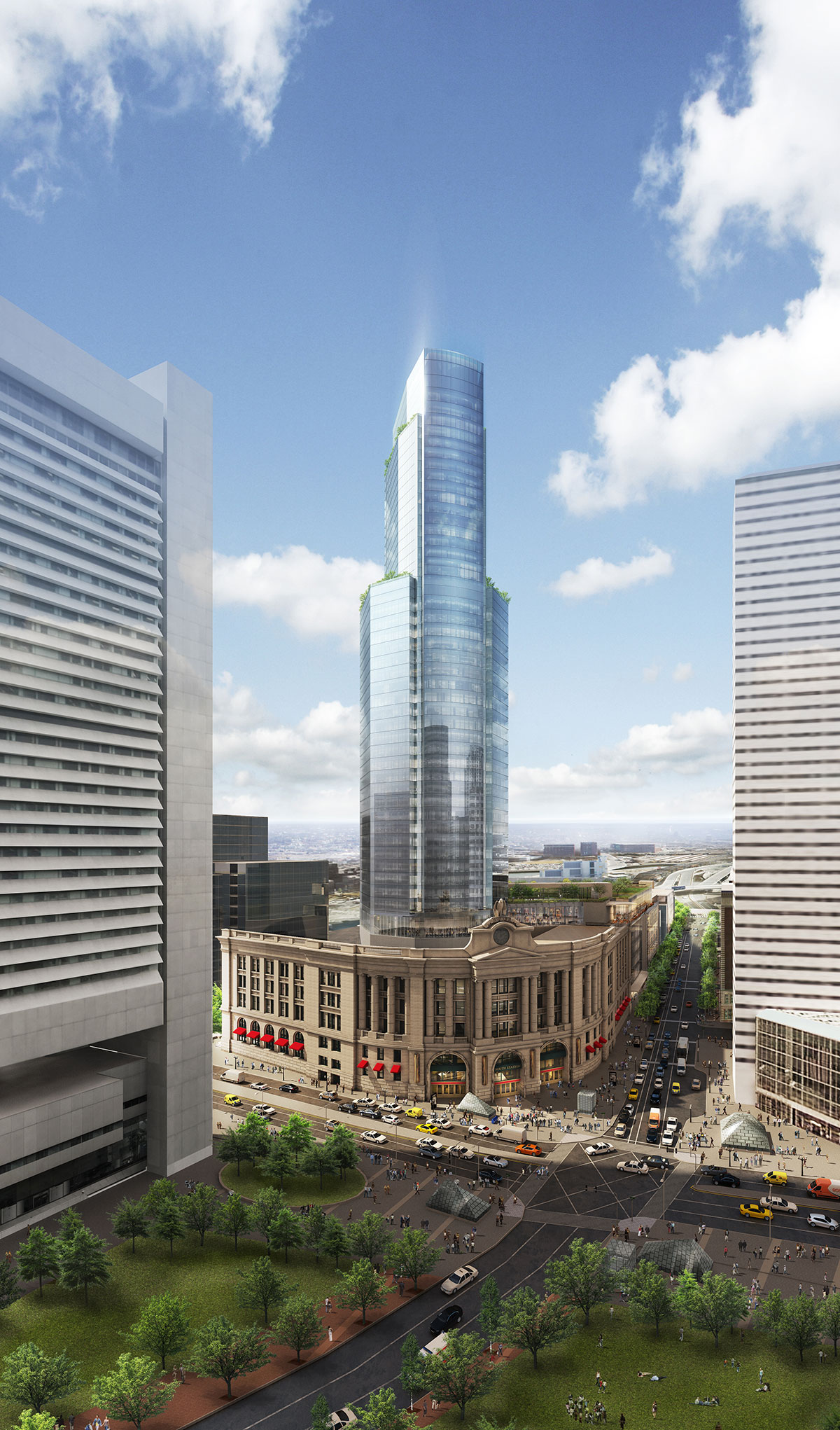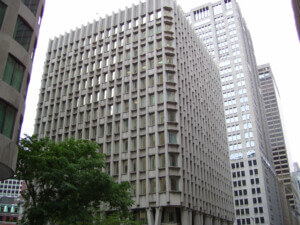With President Biden’s proposed $2 trillion American Jobs Plan in the hands of lawmakers, infrastructure has become part of our national conversation. In Boston, one of the largest transportation infrastructure projects in the city’s history is underway in the venerable South Station, promising to transform the complex into a world-class ground transportation center the city has long needed.
What makes the project possible is the sale of the air rights over the station and construction of a 51-story, 678-foot tower that will combine office space with residences. The developer is the Houston-based Hines and the architect is New Haven-based Pelli Clarke Pelli Architects.
Both Hines and Pelli Clarke Pelli declined to be interviewed for this article. But officials at the Boston Planning and Development Agency (BPDA), formerly the Boston Redevelopment Authority, called the project “a grand new entry to the city” that will knit together the South Station rail complex with the adjacent bus terminal, now awkwardly disconnected.

“Hines took on the cost of the expanded bus terminal and other infrastructure needs,” said Jim Fitzgerald, Assistant Deputy Director for Transportation and Infrastructure Planning for the BPDA. “There will be a new connection from the South Station headhouse to the bus station.”
South Station, originally designed by Boston’s Shepley, Rutan and Coolidge and completed in 1899, is listed on the National Register of Historic Places. Construction of the tower and expanded transportation center began in January 2020 and the entire buildout of this first phase is expected to last until January 2025. Subsequent phases include a hotel and additional office space.
Renderings by Pelli Clarke Pelli show a grand new concourse for the transportation center with vaulted ceilings, recalling the great American and European trains stations from the late 19th and early 20th centuries.
“One thing we are getting which can’t be underestimated is this grand new entry to the city,” said Elizabeth Stifel, senior architect and urban designer at the BPDA. “The architects did a clever job of figuring out how the structure of the tower could be made into this great architectural expression.”
Fitzgerald averred that “air rights projects are great to dream about, but much harder to make happen.” He’s not kidding—the idea of a tower over South Station has existed for more than two decades. As early as 1999, Boston Globe architecture critic Robert Campbell was opining on the Hines/Pelli proposal in a previous iteration. He called this scheme “a violation of the city’s height limit[…] But the violation may be acceptable if the city gets a great public space in return.” He wrote further: “Doesn’t it make sense for growth to occur at a major transit hub like this, where it can be served by Amtrak as well as by subway, commuter rail and long-distance buses? Isn’t that what good urban design is all about?”
The thousands of commuters who go through South Station and the bus terminal every day will have to put up with about four more years of chaos and inconvenience as this massive project on a tight site moves forward. For his part, Fitzgerald is proud that the BPDA stuck to its guns and demanded improvements to the civic realm in return. In addition to the vaulted concourse and easier connection to the bus terminal, civic improvements include weather-protected access to all trains, a new indoor bike storage room, and aesthetic improvements to the South Station facades along Atlantic Avenue.
“We held the line on public improvements,” Fitzgerald said.











